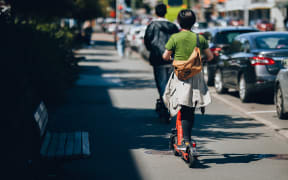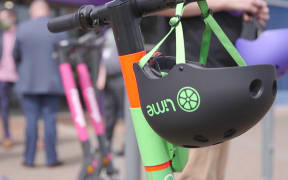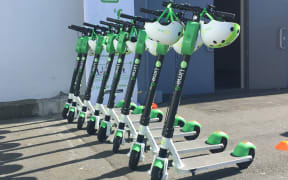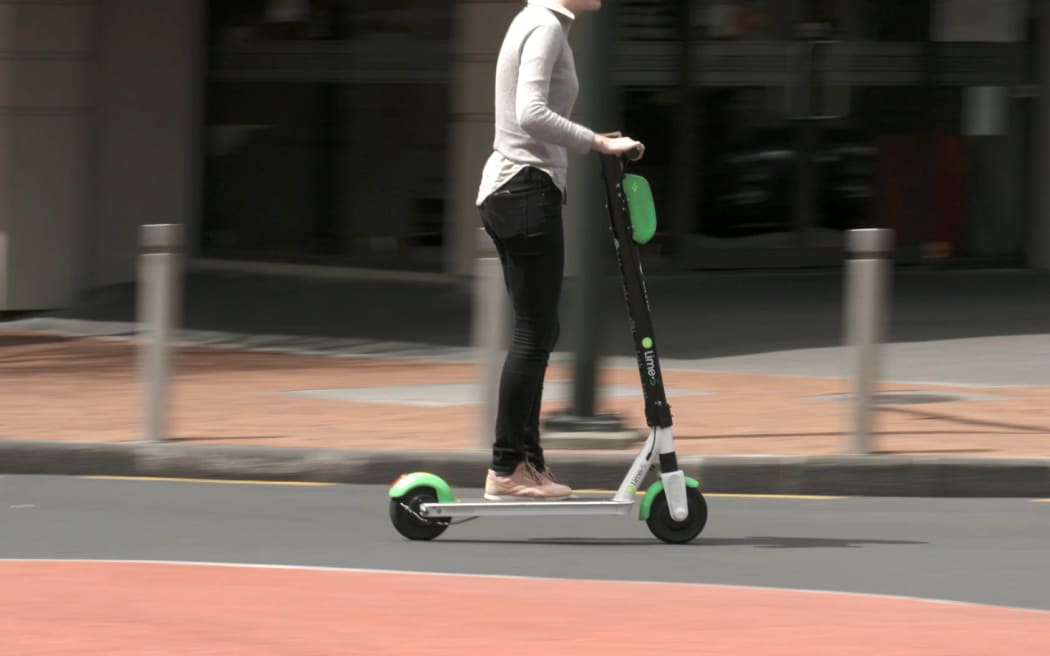
Head injuries were the most common type - suggesting helmets should be compulsory. Photo: RNZ / Nick Monro
E-scooter riders are a bigger risk to themselves than to pedestrians, and tighter speed limits might be imposed, the latest government safety report says.
"Where it has been recorded, the vast majority of admissions to hospital are riders with injuries, not pedestrians," said the Waka Kotahi report.
The report was released a few weeks ago, before the government transport agency approved e-scooters to be used on roads and footpaths for another five years.
Speed was a major factor in the injuries, as was the use of alcohol. Almost half the scooter-riders tested after being injured had alcohol in their system, compared with 15 percent of injured and tested cyclists.
Some pedestrians had been left "stressed or fearful" by crashes or near-misses, and that was an important factor in weighing up ongoing e-scooter use, the study said.
"However, the greatest risk to system safety is the safety of e-scooter riders themselves."
They were second only to motorcyclists for the likelihood of suffering a serious injury.
"E-scootering has a relative risk factor of between two and four times greater than cycling, which is cause for concern and signals that safety attention and action is required," it said.
That action might be coming. The report suggested moves to lower e-scooter speeds, in line with global trends.
At the time the five-year extension was announced, Waka Kotahi signalled as much.
"We think there are areas for improvement such as lower speed limits in high pedestrian areas and use of speed limit signs," it said.
The agency said that the use of e-scooters to get from place to place was growing, and they were a useful transport option.
However, at the time of the decision Blind Citizens NZ slammed the five-year extension, saying slow-speed mechanisms like geo-fencing were not working.
"A substantial number of pedestrians feel anxious or stressed about sharing the footpaths with them," it said.
Argument over e-scooters has receded since it peaked in 2019.
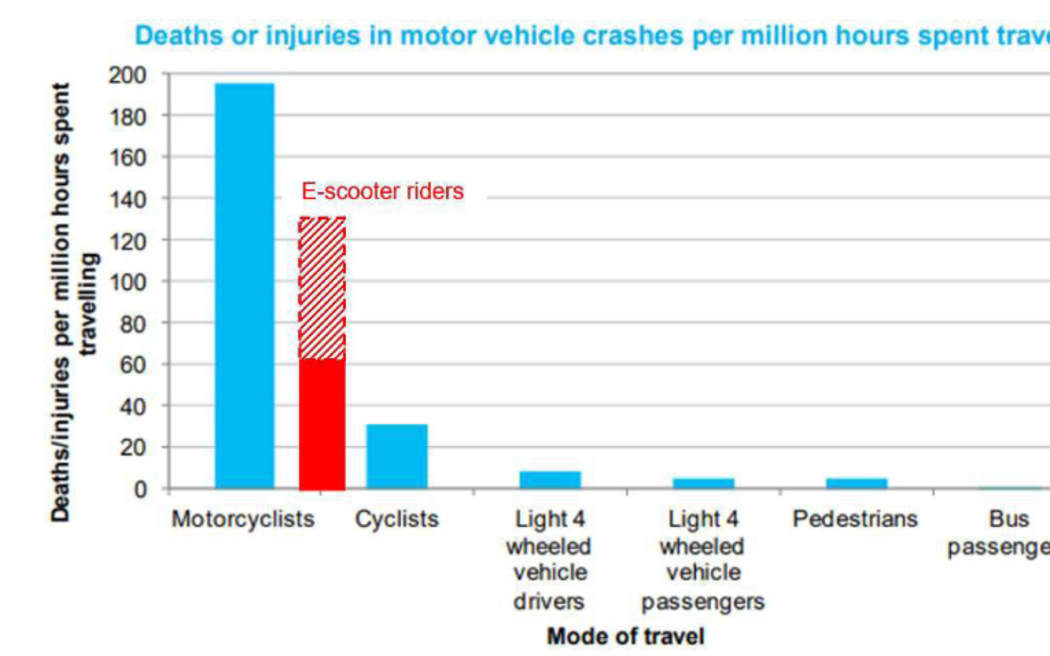
A Waka Kotahi graph showing e-scooter deaths and injuries in motor vehicle crashes. Photo: Waka Kotahi
Between 2018 and 2022, ACC reported 10,000 e-scooter injury claims worth $30m. This number spiked at 3100 in 2019, then fell back to 2500 last year - with the cost per claim dropping steadily.
A disproportionate number of claims came from first-time riders.
"It is evident that as rider experience with e-scooters increases, riding skills increase, and the severity of injuries reduces," the safety report said.
"It could be worth promoting more effective first-time user training sessions."
E-scooter riders had a higher rate of isolated falls than cyclists (87 percent compared with 60 percent of crashes), but had fewer collisions (11 percent compared with 36 percent).
According to the safety report, most serious injuries were to riders' heads, and making helmets compulsory should be looked at.
Rental scooters can be geo-fenced to cut speeds automatically or kept out of some zones entirely, but private ones cannot.
"Casual observation does support the claims that private e-scooter operators are more likely to wear helmets, be more considerate of other path users, and are more familiar and skilful in terms of safe device operation," it said.

